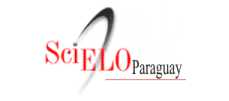Características clínicas y microbiológicas asociadas a la neutropenia febril
Resumen
Introducción: la neutropenia es consecuencia de una serie de enfermedades pero se observa con mayor frecuencia en pacientes oncológicos posterior a la quimioterapia. Si a la neutropenia se agrega fiebre, el pronóstico es ominoso. La importancia de esta patología radica en la morbimortalidad que produce en los pacientes.
Objetivos: describir las características clínicas y demográficas de pacientes adultos con neutropenia febril del Hospital Nacional.
Metodología: fueron evaluadas las historias clínicas de pacientes con neutropenia febril de cualquier etiología internados en salas de Clínica Médica del Hospital Nacional (Itauguá, Paraguay) en el período 2010 al 2016. El diseño fue observacional, retrospectivo y prospectivo.
Resultados: se identificaron 41 pacientes con el diagnóstico de neutropenia febril, de los cuales 23 (56,1%) eran del sexo femenino. La edad media fue 52±13 años. La causa más frecuente de neutropenia fue posterior a la quimioterapia en pacientes oncológicos. Staphylococcus hominis fue el germen aislado con mayor frecuencia. Con el índice MASCC se identificó 20 pacientes con alto riesgo (48,78%) y 21 pacientes con bajo riesgo (51,22%). Se tuvieron 7 óbitos (17,1%).
Conclusiones: la neutropenia febril fue más frecuente en pacientes con aplasia medular posterior al tratamiento quimioterápico. La mortalidad fue 17,1%.
Citas
Masmoudi S, Khanfir A, Maalej-Mezghan S, Hammami A, Frikha M. Chermotherapy induced febrile neutropenia: About 186 episodes. Clinical, microbiological and therapeutic characteristics. Tunis Med. 2015 Apr; 93(4):217-22.
Sánchez-Muñoz A, García-Carbonero R, Cortés-Funes H, Paz-Ares L. Envolving treatment of fever and neutropenia in cancer patients. Rev Oncol. 2002; 4(6):297-307.
Klastersky J, Ameye L, Maertens J, Georgala A, Muanza F, Aoun M, et al. Bacteraemia in febrile neutropenic cancer patients. Int J Antimicrob Agents. 2007; 30 (Suppl 1): S51-9.
Butts AR, Bachmeier CC, Dressler EV, Liu M, Cowden A, Talbert J, Adams VR. Association of time to antibiotics and clinical outcomes in adult hematologic malignancy patients with febrile neutropenia. J Oncol Pharm Pract. 2017; 23(4): 278-83.
Manterola A, Romero P, Martínez E, Villafranca E, Arias F, Domínguez MA, Martínez M. Neutropenia and fever in the patient with cancer. An Sist Sanit Navar. 2004; 27 (Suppl 3):33-43.
Wisplinghoff H, Seifert H, Wenzel RP, Edmond MB. Current trends in the epidemiology of nosocomial bloodstream infections in patients with hematological malignancies and solid neoplasms in hospitals in the United States. Clin Infect Dis. 2003; 36(9):1103-10.
Madrid C, Díaz L, Combariza J, Gálvez K, Olaya V, Ramírez I, Donado J. Epidemiology of febrile neutropenia in adult patients with hematologic neoplasms in a period of 26 months in Hospital Pablo Tobón Uribe, Colombia. Rev Chilena Infectol. 2013 Apr; 30(2):195-201.
Santolaya ME, Rabagliati R, Bidart T, Payá E, Guzmán AM, Morales R, et al. Consensus: Rational approach towards the patient with cancer, fever and neutropenia. Rev Chil Infect. 2005; 22 (Supl 2): S79-S113
Freifeld AG, Bow EJ, Sepkowitz KA, Boeckh MJ, Ito JI, Mullen CA, et al. Clinical practice guideline for the use of antimicrobial agents in neutropenic patients with cancer: 2010 update by the Infectious Diseases Society of America. Clin Infect Dis. 2011 Feb 15; 52(4):e56-93.
Klastersky J, Paesmans M, Rubenstein EB, Boyer M, Elting L, Feld R, et al. The multinational association for supportive care in cancer risk index: a multinational scoring system for identifying low-risk febrile neutropenic cancer patients. J Clin Oncol. 2000; 18(16):3038-51.
Boxer LA. How to approach neutropenia. Hematology Am Soc Hematol Educ Program. 2012; 2012:174-82.
Uys A, Rapoport BL, Anderson R. Febrile neutropenia: a prospective study to validate the Multinational Association of Supportive Care of Cancer (MASCC) risk-index score. Support Care Cancer 2004; 12(8):555-60.
Paesmans M, Klastersky J, Maertens J, Georgala A, Muanza F, Aoun M, et al. Predicting febrile neutropenic patients at low risk using the MASCC score: does bacteremia matter? Support Care Cancer. 2011 Jul; 19(7):1001-8.
Gustinetti G, Mikulska M. Bloodstream infections in neutropenic cancer patients: A practical update. Virulence. 2016 Apr 2;7(3):280-97.
Klastersky J, Paesmans M, Georgala A, Muanza F, Plehiers B, Dubreucq L, et al. Outpatient oral antibiotics for febrile neutropenic cancer patients using a score predictive for complications. J Clin Oncol. 2006 Sep 1; 24(25):4129-34.
Nam EY, Song KH, Kim NH, Kim M, Kim CJ, Lee JO, et al. Differences in characteristics between first and breakthrough neutropenic fever after chemotherapy in patients with hematologic disease. Int J Infect Dis. 2016 Mar;44:4-7.
López R, Ovando F. Neutropenia febril. Tendencias en Medicina /internet/. 2015 /citado 20 diciembre 2016 /; 10(10):34-8. Disponible en: http://tendenciasenmedicina.com/Imagenes/imagenes10p/art_07.pdf
Rabagliati R, Bertín P, Cerón I, Rojas H, Domínguez I, Vera Á, et al. Epidemiology of febrile neutropenia in adult patients with acute leukemia and lymphoma: Cohort study of public and private hospital of Santiago, Chile. Rev Chilena Infectol. 2014 Dec; 31(6):721-8.
Sigurdardottir K, Digranes A, Harthug S, Nesthus I, Tangen JM, Dybdahl B, et al. A multi-centre prospective study of febrile neutropenia in Norway: microbiological findings and antimicrobial susceptibility. Scand J Infect Dis. 2005; 37(6-7):455-64.
Yan CH, Xu T, Zheng XY, Sun J, Duan XL, Gu JL, et al. Epidemiology of febrile neutropenia in patients with hematological disease-a prospective multicentre survey in China. Zhonghua Xue Ye Xue Za Zhi. 2016 Mar; 37(3):177-82.
Cervetti L, Vallard A, Le Moulec S, Espenel S, Falk AT, Ben Mrad M, et al. Prognosis prediction of febrile neutropenia by MASCC score: A retrospective study. Bull Cancer. 2016 Jun; 103(6):561-70.
Contreras V, Sepúlveda S, Heredia A. Is the addition of aminoglycosides to beta-lactams in cancer patients with febrile neutropenia needed? Medwave. 2016 Feb 24; 16 (Suppl 1):e6379.
Fust K, Parthan A, Maschio M, Gu Q, Li X, Lyman GH, Tzivelekis S, Villa G, Weinstein MC. Granulocyte colony-stimulating factors in the prevention of febrile neutropenia: review of cost-effectiveness models. Expert Rev Pharmacoecon Outcomes Res. 2017 Feb; 17(1):39-52.
Wang L, Wang Y, Fan X, Tang W, Hu J. Prevalence of resistant gram-negative bacilli in bloodstream infection in febrile neutropenia patients undergoing hematopoietic stem cell transplantation: A single center retrospective cohort study. Medicine (Baltimore). 2015 Nov; 94(45):e1931.

















